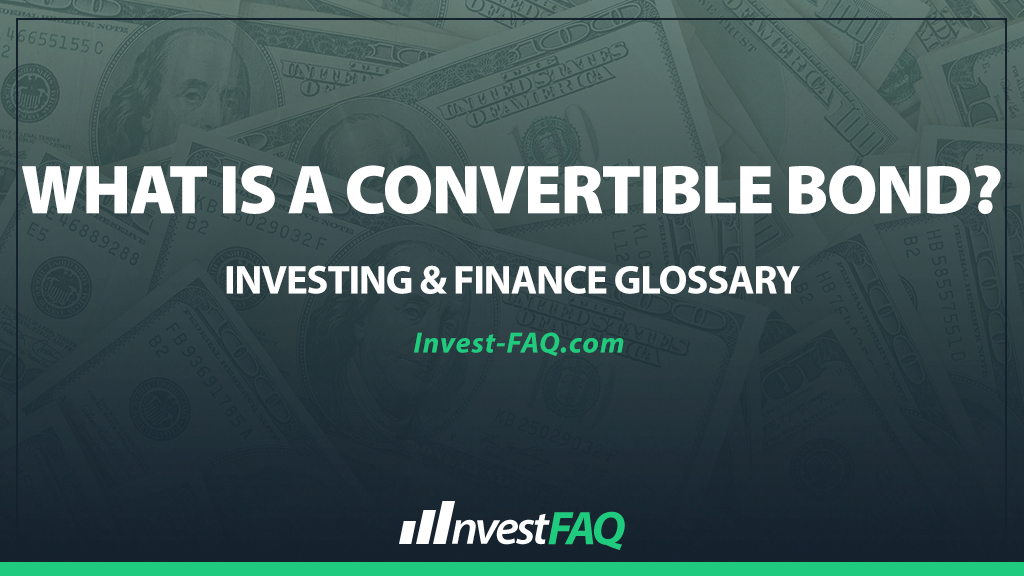
Convertible Bond
Contents
A convertible bond is a type of corporate debt security that can be converted into a predetermined number of the company’s shares at certain times during its life, usually at the discretion of the bondholder. This feature combines the income benefits of a bond, such as regular interest payments, with the option to participate in the equity appreciation of the issuer’s stock.
Convertible bonds are a versatile financial instrument used by businesses to raise capital with potentially lower interest rates compared to standard bonds, thanks to the equity conversion option.
They are attractive to investors who seek the safety of fixed-income securities but are also open to the potential for higher returns through equity conversion if the issuer’s stock performs well.
Example of a Convertible Bond
Imagine “ABC Technologies” issues a convertible bond with a face value of $1,000, an annual coupon rate of 5%, and a conversion ratio of 25, meaning each bond can be converted into 25 shares of ABC’s stock. If ABC’s stock price rises to a level where the market value of 25 shares exceeds $1,000, bondholders might opt to convert their bonds into shares rather than hold the bond to maturity and merely receive interest payments.
In the ABC Technologies scenario, the convertible bond offers investors a safety net through regular interest payments, while also providing the opportunity to convert the bond into stock if the company’s share price appreciates significantly.
For ABC, issuing convertible bonds allows them to raise capital at a lower cost since the attractiveness of the conversion feature enables them to offer a lower interest rate compared to regular bonds. If the stock does well and bonds are converted, ABC also benefits from not having to repay the bond principal in cash, although this comes at the cost of equity dilution.
Types and Uses in Business Scenarios
Convertible bonds can be used in various business scenarios, including:
Growth Financing: Companies looking to fund expansion projects without immediately diluting equity may opt for convertible bonds.
Balance Sheet Management: Convertible bonds can improve balance sheet metrics by classifying part of the company’s debt as equity upon conversion, potentially improving debt-to-equity ratios.
Strategic Financing: Startups and high-growth companies may use convertible bonds to attract investors who are interested in both fixed income and potential equity upside.
Significance for Investing & Finance
From an accounting perspective, convertible bonds are significant for several reasons:
Disclosure Requirements: Issuers must disclose convertible bond features in their financial statements, including conversion terms, rates, and potential impact on equity.
Interest Expense and Amortization: The interest expense on convertible bonds affects the company’s income statement, and any issuance costs must be amortized over the life of the bond.
Equity Dilution Analysis: Companies must consider and often disclose the potential dilution effect of convertible bonds on existing shareholders, calculating the impact if all bondholders decide to convert.
In summary, convertible bonds offer companies a flexible financing option that can be less costly than other forms of debt, with the trade-off of potential equity dilution.
For investors, they provide a fixed-income investment with the added potential for capital gains through conversion, making them a unique tool for balancing risk and reward. In accounting, they require careful management and disclosure, given their impact on both the income statement and the balance sheet.
FAQ
What makes a convertible bond different from a regular bond?
A convertible bond offers the holder the option to convert the bond into a predetermined number of shares of the issuing company, combining the fixed income characteristics of bonds with the growth potential of stocks, unlike regular bonds which only provide fixed interest payments.
How does the conversion feature of a convertible bond benefit the investor?
The conversion feature benefits the investor by providing the opportunity to convert the bond into company shares, usually at a premium to the stock’s price at the time of the bond’s issuance, allowing investors to participate in the equity appreciation of the company.
What factors should companies consider before issuing convertible bonds?
Companies should consider the potential for dilution of existing shareholders’ equity if the bonds are converted into stock, the desire to lower interest costs, and the attractiveness of the convertible bond to potential investors based on the current and projected stock performance.
How are convertible bonds accounted for on a company’s financial statements?
Convertible bonds are recorded as debt on the company’s balance sheet until conversion, with interest expenses shown on the income statement; upon conversion, the bond’s value is transferred from liability to equity, impacting the debt-to-equity ratio.
